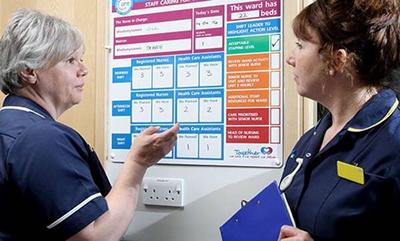Mortality, missed care and nurse staffing: it’s obvious

The latest evidence on missed care and outcomes adds to the evidence on the value of registered nursing staff. But the need for ‘enough nurses’ has to be obvious to everyone, says researcher Jane Ball
Decades of research has established, beyond doubt, that there is an association between Registered Nurse (RN) staffing levels and mortality rates. We have hypothesised – but not previously tested – that ‘missed care’ may be the reason that low RN staffing is related to patient risk of death in hospital. That when there are fewer RN staff on duty, necessary care is less likely to be completed in full.
We know that RN staffing levels are related to the incidence of care being left undone and that having more support staff does not compensate for low RN staffing, because their roles are of course different. But until now we have not known what effect missed RN care has on patient outcomes. We might expect that when RNs are not able to provide all the care their patients need due to low staffing, patient outcomes will suffer.
Our most recent research, published in the IJNS, confirms that 'missed RN care' is related to mortality levels. After common surgical procedures, patients are more likely to die if they are in a hospitals where higher levels of missed care are reported. Each 10% increase in missed care is associated with 16% greater risk of death.
Some of the reactions to the findings recently reported in the press are less than edifying: “No s**t Sherlock”, “This research is a waste of time and money”, “We’ve all known this for years - it’s obvious.”
Although somewhat disheartening, I do have some sympathy with these responses; the research findings seem entirely logical and in line with ‘common sense’. Sit on an understaffed ward for an hour and you soon see signs of strain and compromised care. As the CQC noted: ‘having plenty of staff does not guarantee good care, but not having enough is a sure path to poor care’.
But are these ‘obvious’ findings being used in practice?
One in ten RN posts in the NHS are currently vacant. Despite the deep and ongoing national shortage of RNs, the student intake for 2017 has fallen – by an estimated 4%. At the same time, CPD budgets have been cut by as much as 50%. When we most need a skilled registered nursing workforce, we are producing fewer not more of them. It would seem that the message about the value of RNs and importance to patient safety is not obvious to everyone.
Arguably, what went wrong at Mid Staffordshire was not simply that they cut RN staffing. What went wrong was that they changed the nursing workforce without considering the risks to patient care, without taking account of the evidence regarding the risks. So, next time you find yourself thinking ‘it’s obvious’ - don’t knock the research, use it and share it.
The value of nursing and the need for ‘enough nurses’ needs to be obvious, not just to health sector colleagues but to our friends, family and wider society. So that neighbours, the person behind the checkout, our local councillors and MPs, all understand the significance of the research. That nurse staffing matters. The evidence needs to be translated into action, to increase the number of RNs available so vacant posts are filled and staffing levels improved. We need enough registered nurses to deliver care safely and effectively: it’s obvious.